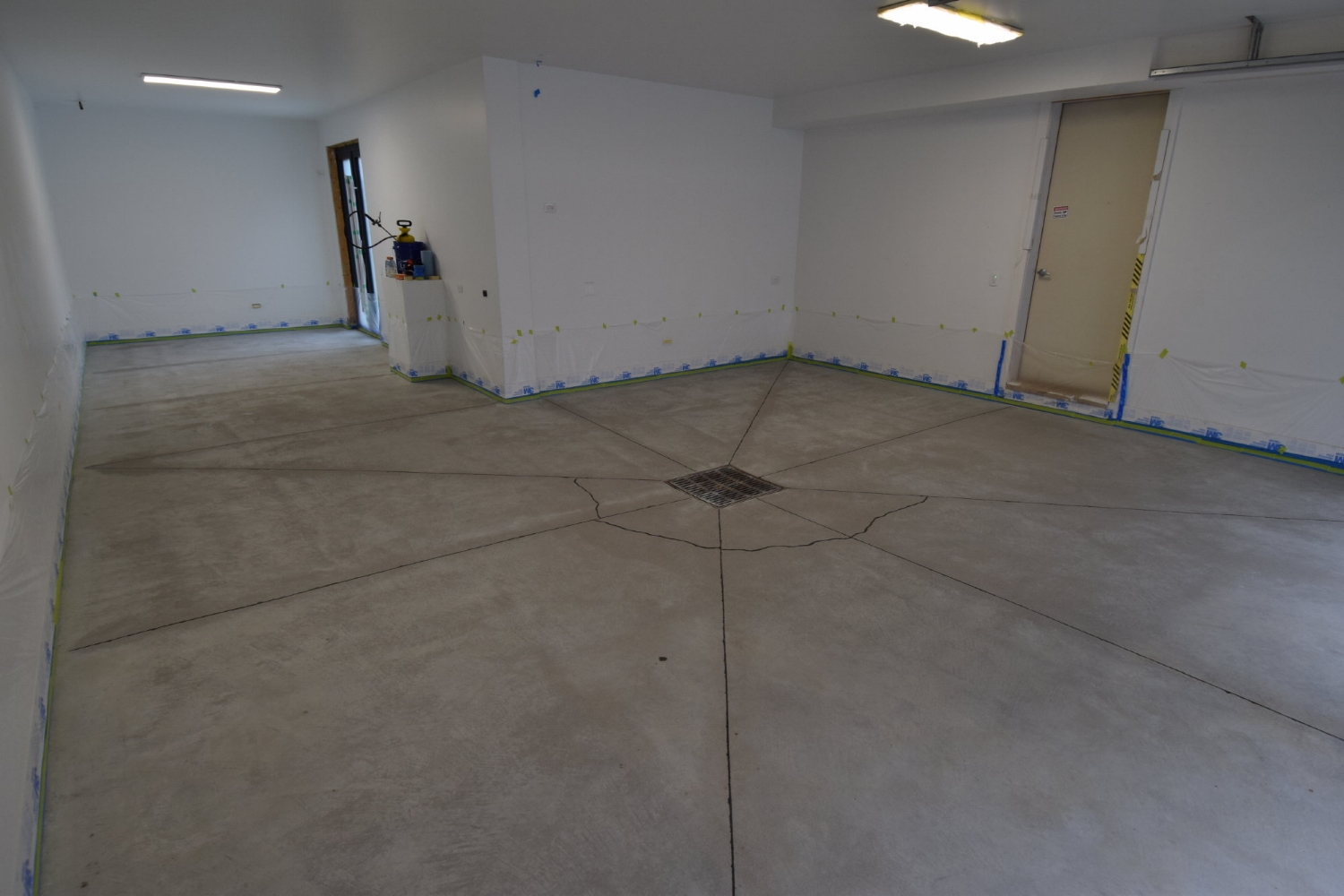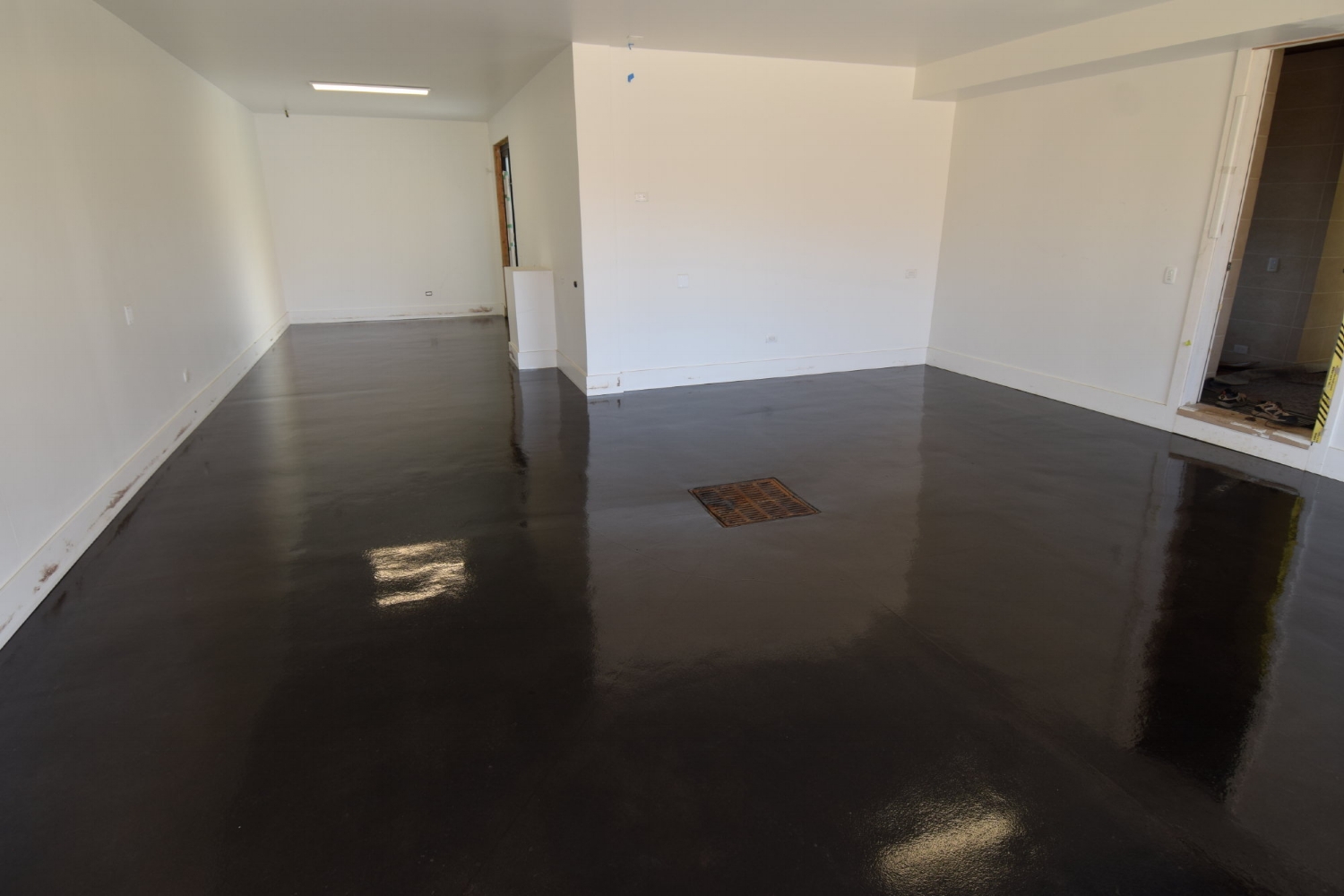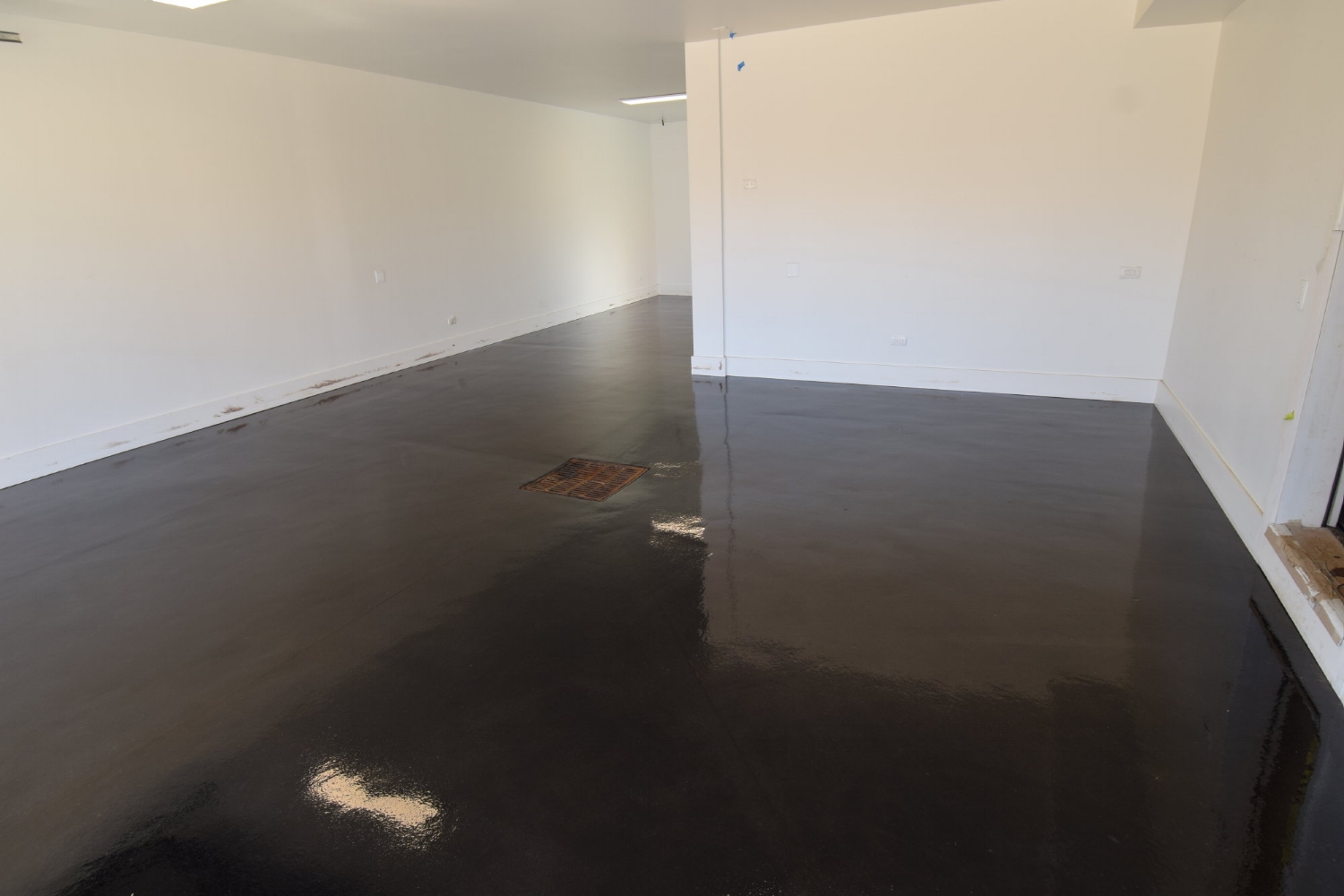Birmingham Residence
This is the garage of a new, custom home in Birmingham, Michigan. The homeowners were so pleased with the job we had done acid-staining their basement floor that they asked us if we could do the garage the same way. They didn't like the synthetic look of the traditional epoxy color flake system that is done in most garages.
We acid-stained their basement floor a dark brown, almost black, and used the same color - Brickform Ebony - on the garage floor. We had to be careful because the concrete was sloped toward the sewer grate in the middle of the floor. To prevent the stain from running, we applied 6 very light coats instead of the 2 normal coats.
Despite being new, the garage floor (above left) still needed a great deal of cleaning. There were also a lot of unsightly saw-cut control joints. Prior to staining, we spent a few days cleaning, sanding and scraping the floor, before filling the joints and a large crack near the sewer grate with a dark brown polyurea joint filler (above right).
We applied the acid stain with a two-gallon, acid-resistant pump-up sprayer. The photo above left shows the color of the floor immediately after applying the 6 light coats of stain. The photo above right shows the color of the floor after the stain was allowed 12 hours to react with the concrete and the excess stain residue was rinsed.
The final color of an acid-stained concrete floor rarely looks the same before and after applying the sealer. Though the acid stain only reached a dark brown hue after staining, we knew the sealer was going to darken and enhance the depth of color to look close to black. Above left, you can see the sealer being applied. Above right, you see the finished product.
We applied 3 coats of a clear, gloss polyurea sealer to protect the acid-stained concrete. Included in the sealer was a glass bead additive for slip resistance. Notice how the unsightly saw-cut joints at the outset of the project have just disappeared, making the floor a monolithic, uniformly colored slab.












